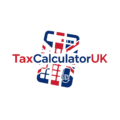Current VAT Rate UK
Understanding the VAT Rate UK is essential for anyone running a business, working in finance, or simply trying to make sense of what they’re paying on everyday purchases.
Whether you’re adding VAT to your prices or checking what’s included in a bill, our UK VAT Calculator simplifies the process and gives you accurate results in just a few clicks.
What is the VAT Rate in the UK?
The VAT Rate UK refers to the value-added tax applied to most goods and services sold within the country. It is an indirect tax, collected by businesses on behalf of the government. If you’re wondering what is VAT rate currently applicable, it’s important to note that there are different rates depending on the nature of the product or service.
As of now, the current VAT rate is:
-
20% (Standard Rate): Applies to the majority of goods and services.
-
5% (Reduced Rate): Charged on specific items such as domestic energy, children’s car seats, and sanitary products.
-
0% (Zero Rate): Applies to most food items, children’s clothing, newspapers, and books.
-
Exempt Items: Some goods and services are completely exempt, like postage stamps, property transactions, and financial services.
These different categories help determine how much VAT is charged or reclaimed, which is where our calculator comes in handy.
For businesses under the VAT Flat Rate Scheme, calculating VAT is even simpler. You can learn more about this method of payment on our VAT Flat Rate Scheme page.
Latest VAT Rate and Historical Changes
The latest VAT rate has been in place since January 2011, where it was set at 20%. However, the rate has changed over the years depending on the country’s economic situation and government policy priorities.
Here’s a quick look at how the GB VAT rate has evolved:
| Year | VAT Rate (Standard) |
|---|---|
| 1973 – 1974 | 10% |
| 1974 – 1979 | 8% |
| 1979 – 1991 | 15% |
| 1991 – 2008 | 17.5% |
| 2008 – 2009 | 15% |
| 2009 – 2011 | 17.5% |
| 2011 – Now | 20% |
You can always find up-to-date details directly from HMRC’s VAT rate guidance.
Who Needs to Pay VAT in the UK?
If you’re running a business in the UK and your taxable turnover exceeds £85,000 annually, you’re required to register for VAT. Once registered, you must charge the appropriate VAT Rate UK on your goods and services and submit VAT returns to HMRC.
Whether it’s the VAT rate UK 2024 or VAT rate UK 2025, keeping track of VAT thresholds and submitting your returns on time is crucial. If you’re unsure, our VAT Calculator helps you verify that you’re applying the correct VAT rate UK for any transaction.
How to Pay VAT to HMRC
Businesses can pay VAT to HMRC using various methods. Fastest options include:
Online or telephone banking (Faster Payments)
CHAPS (Clearing House Automated Payment System)
Other options, which may take up to three working days, include:
Direct Debit
BACS
Online payments via debit/credit cards
Standing orders (for Annual Accounting Scheme users)
If your payment deadline falls on a weekend or bank holiday, you must ensure the funds reach HMRC by the last working day before the due date.
Filing VAT Returns Correctly
When preparing your VAT return, ensure each invoice contains the following:
Invoice number and date
VAT registration number
Customer’s name and address
Clear description of goods/services
Quantity and unit price (excluding VAT)
Applied current VAT rate
Total VAT amount payable
Discounts if any
Accuracy is key in VAT returns, and incorrect filings can lead to penalties or delays. Double-check calculations using our reliable VAT calculator.
Why Use Our VAT Calculator?
Our VAT Calculator is a fast and reliable tool to:
Add or remove VAT from prices
Double-check invoices and bills
Stay compliant with the GB VAT rate
Understand how the latest VAT rate affects your transactions
Keep up with changes in VAT rate UK 2024 and VAT rate UK 2025
Whether you’re a business owner, accountant, or everyday consumer, staying informed on what is VAT rate and how it applies to you can save time and prevent costly errors.
